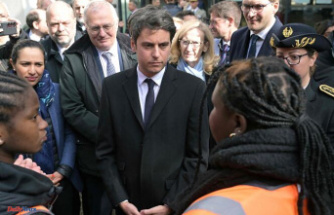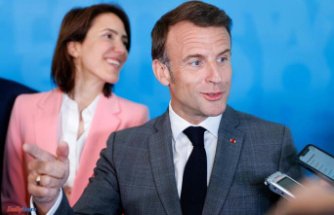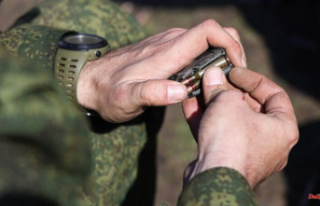On the second Sunday in October, all eyes turn to Hanover: the last major political decision of the year is pending in north-west Germany. Which party will gain trust in the autumn of 2022? The most important figures and data at a glance.
Major political event in Lower Saxony: On Sunday, October 9th, around six million inhabitants of the second largest state in the Federal Republic in terms of area are called upon to redefine the political balance of power in the state parliament.
The state elections in Lower Saxony are seen beyond the state borders as a mood test for the political climate in Germany: In the midst of turbulent times and in view of a brutal war in Eastern Europe, high inflation and the onset of the energy crisis, what is likely to be the last major election of the current year is coming up in Lower Saxony.
The vote in the federal state, which has a total of 7.9 million inhabitants, is attracting a great deal of attention in the national political debate: do voters trust their government in times of crisis? Are populist currents gaining strength? Is there a realignment of power relations in Hanover, the capital of Lower Saxony?
According to the polls of the past few months, Prime Minister Stephan Weil, who has been in power since 2013, has good prospects of re-election: In polls, the SPD was still well ahead of the CDU and the Greens for a long time. Good personal poll numbers also fuel the expectation that the Social Democrats, under their top candidate Weil, can also benefit from the office bonus in the election.
However, nothing is certain in autumn 2022 in Lower Saxony either: the prospects for the coming winter are casting dark shadows in Lower Saxony's state politics. In the flat region between the North Sea and the Harz Mountains, rising mobility and energy costs are just as noticeable as distortions on the agricultural markets or gloomy prospects for industry.
Lower Saxony is not only characterized by agriculture: With the VW works in Wolfsburg, the federal state is home to one of the world's largest automobile groups, as well as important connections to the world markets with Bremerhaven and the Jade-Weser-Port.
It is still unclear exactly how the forthcoming burdens from rising energy prices for consumers, small businesses and large corporations will affect voting behavior. "It's hard to say what impact concerns about inflation and the gas crisis will have on the election," said the head of the polling institute Forsa, Manfred Güllner, summing up the initial situation in the run-up to the Lower Saxony elections in early autumn.
Postal voting began in Lower Saxony at the end of August. It will be interesting to see how many residents of Lower Saxony actually want to vote. The level of voter turnout could influence the outcome of the state election in one direction or the other. "The resentment about high prices and the feeling that politics can't get the problems under control could lead to a high level of abstention, as was the case in North Rhine-Westphalia," suspected the Forsa boss.
Which party can mobilize the most voters in the current world situation? Will the state elections in Lower Saxony be the hour of populist parties? The right-wing extremist camp is currently mobilizing for a "hot autumn," said Güllner. Nevertheless, he doubts that the AfD could actually benefit from this. According to the pollster, those who are dissatisfied are more likely to switch to the non-voter camp.
In times of crisis, familiar faces could inspire trust, they say. Nevertheless, the nervousness in the ranks of the SPD and the FDP is noticeable. Because the chancellor party recently saw the federal trend at less than 20 percent, in Lower Saxony, on the other hand, the social democrats were last at 31 percent. In a survey at the beginning of October, the Liberals came up with only five percent - the entry into the state parliament seems uncertain. "Of course, we have to assume that this election, like that in North Rhine-Westphalia and Schleswig-Holstein, will be dominated by other issues than state politics," points out Stefan Marschall, a political scientist at the University of Düsseldorf.
According to several campaigners in Lower Saxony, rising prices, spending on petrol and diesel, and the energy crisis are the dominant themes at the campaign stands. In one of the last polls in Lower Saxony in September, the SPD was still over 30 percent. But the lead over the co-governing CDU has shrunk in recent months. Can Weil continue his red-black alliance?
On the evening of the election, the main focus will be on the possible coalition options: Based on the latest polls, the Social Democrats could expect 46 of the 135 seats in the state parliament. The CDU would come to 42 - and with the Greens and FPD to a possible majority. Should the SPD lose the post of Prime Minister in Hanover, this should trigger shock waves to Berlin. After all, Weil has been in power in Hanover for eight years and is definitely a driving force for his party. And Lower Saxony is actually the winner of the energy transition with the expansion of wind power and the installation of LNG terminals.
Russia's war against Ukraine is also leaving deep scars in Lower Saxony. "Uncertainty has grown in all the parties that are relevant to the formation of a government," says one of the campaigners in the background - while everyone is demonstrating their confidence in victory. In the early state elections in 2017, the SPD prevailed with 36.9 percent of the votes against the CDU with 33.6 percent. This was followed in 2017 by Bündnis 90/Die Grünen with 8.7 percent, FDP with 7.5 percent and AfD with 6.2 percent.
The state parliament in Lower Saxony normally has at least 135 seats. Of these, 87 MPs are elected as direct candidates by first vote in the constituencies. At least 48 MPs are elected to the state parliament via the second vote and the state lists of the parties.
Those entitled to vote each have two votes: a first vote for the election of an applicant in their region, the so-called "district election proposal", and a second vote for the election of a party in the "state election proposal". The second vote is decisive for the distribution of seats in the state parliament: the number of second votes cast determines the relative size of the parties in the state parliament. Incidentally, the five percent hurdle applies in Lower Saxony: parties that achieve fewer than five percent of the valid votes are excluded from the distribution of seats.












